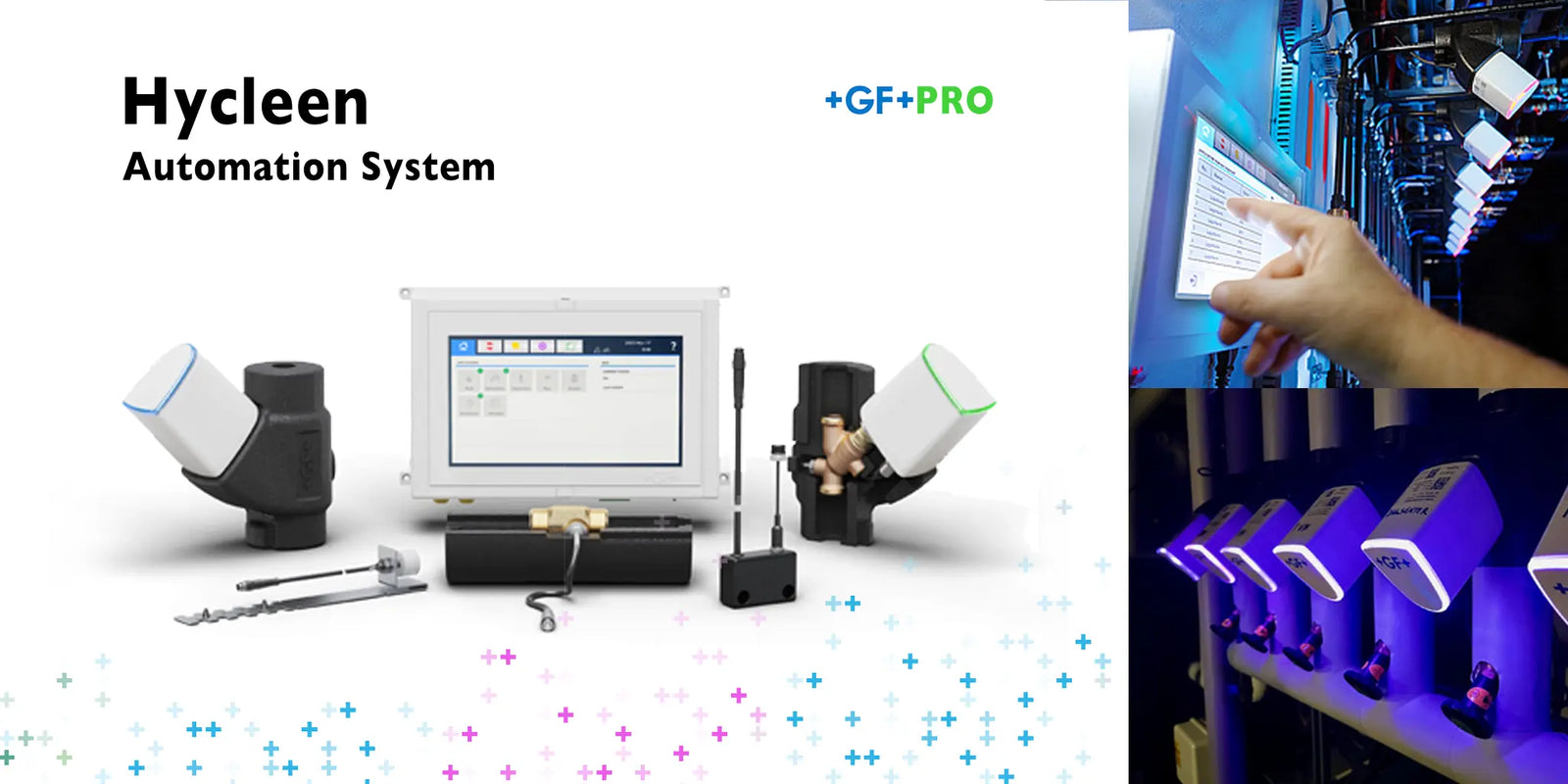Hycleen Automation System of GF - Cloud control

GF Hycleen Automation System
Thermal balancing is one of the most important processes for drinking water in domestic hot water facilities.
It involves equitably distributing water flow and distributing it based on needs, while continuously monitoring temperatures throughout the building. Furthermore, this technology has been shown to reduce energy consumption and increase comfort.
The Hycleen automation system continuously manages and maintains the thermal balancing process in a highly effective and efficient manner. This comprehensive solution combines digitalized sensors and valves connected to a central controller, the "master." The master automatically monitors and optimizes thermal balancing on a daily basis. This innovative system addresses critical risk factors in even the most complex facilities, ensures optimal hygiene, helps comply with current legislation, and even offers centrally controlled, cloud-based remote maintenance and monitoring functions.

"We found a viable solution with the Akenza platform that allowed us to connect the product to our cloud environment while respecting our strict time constraints."
Philippe Cachot
Director of operations
Georg Fischer JRG
Connect the Hycleen AS in just 4 months...
In collaboration with akenza, this modernization project was completed in a record time of just four months. With a simple firmware update of the master device and thanks to akenza's IoT application enablement platform, it was possible to connect the Hycleen AS to the cloud via MQTT without the need for additional hardware development.
The master device connects to the Akenza platform and creates its digital twin. The master device is directly connected to the internet using the MQTT protocol, which is responsible for bidirectional uplink and downlink communication.

Product update results...
The new Hycleen Connect integrated system upgrade offers an easy-to-use remote asset management platform that supports all the features of the previous system, such as optimizing user comfort, saving energy through hydraulic balancing, and reducing hygiene risks (reducing the risk of legionellosis), but also offers new possibilities:
Remote monitoring: Building managers have access to a centralized point to operate different buildings and coordinate maintenance services.
Cost reduction: Optimizing maintenance processes leads to cost reduction.
Data accessibility: Available data facilitate documentation of conditions for public health authorities.
Reaction time: The activation of immediate alarms, based on the data recorded by the system, allows any problems or errors within the system to be quickly corrected.
Leave a comment